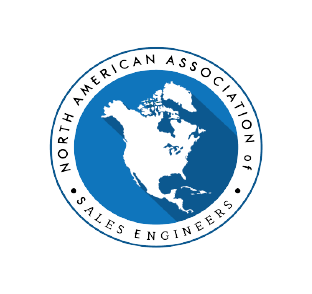North American Association of Sales Engineers
Electro-Mechanical Actuators
by Marc Angers

I’d like to set the record straight and refute some myths on Electro-Mechanical actuators. My experience includes having worked for a custom electro-mechanical actuator manufacturer for 8 years as a sales and applications engineer. My mentors for this education are (in my estimation) to be the best in this industry.
Some considerations when selecting an electro-mechanical actuator would be:
- load of the mass?
- velocity to move the mass?
- distance traveled under load?
- orientation of the actuator- horizontal or vertical?
- will the load will be in extend, retract or both directions?
If the actuator is to be mounted vertically, please consider whether the piston is to be mounted up or down. Horizontal loads should look at the possibility of an unsupported length of travel. If the travel is to the end on the stroke, you may have “piston drop” with an unsupported load, causing the front support bearing to wear prematurely. A sign of this would be bearing transfer into the piston. For a vertical mount with piston up the column loading should be calculated to prevent buckling or breaking of the ballscrew.
When looking at electro-mechanical actuators the manufacture’s catalog is an excellent point to begin. But many people fail to examine B10 or L10 life of the ballscrew. Just a simple definition of B10 or L10 life “is the time by which 10% of ballscrews will fail.” B-10 life will determine the life of the actuator in the application. Typically customers are looking for the maximum B10 life for ROI, which is why calculating B10 life upfront is critical.
Another aspect of actuator sizing is the “move profile”. There are three parts of this. Acceleration, constant velocity move and deceleration. Acceleration should never exceed 1G when considering a ballscrew driven actuator. If acceleration is greater than 1G the circulating balls in the ballnut will skid and not rotate. Over time this will result in infant mortality of the ballscrew. Constant velocity move is when the load has broken inertia. Deceleration is critical. You cannot have the ballscrew impacting the stops during this part of the move profile. Constant uncontrolled deceleration would be the cause for infant mortality of the actuator. One tell-tale sign is the broken fasteners in the end cap. My experience is a servo motor and controller provide the best result for a controlled deceleration.
Some actuators offer load cells. It’s been my experience that the most accurate way to measure force is with an internally mounted load cell. We always used an encapsulated donut style cell internally mounted between the thrust and retract bearing. This arrangement is best to measure force in either direction. This has proven to be more reliable in industrial applications over external piston mounted cells with cables hanging.
Let’s say your load falls between two different actuator sizes- how do you properly size this?
Simple, add another bearing in the direction you need the additional force in. This works if you have only one bearing in each direction which would require a larger end cap, but can be done on some actuators. Other multi-bearing actuators in thrust and retract its best to simply take one bearing and flip it. For example: you need force in “extend” but not retract, and you have two bearings for each direction of force. Simple flip a retract bearing to the direction of force. This would provide you the additional force in that direction.


